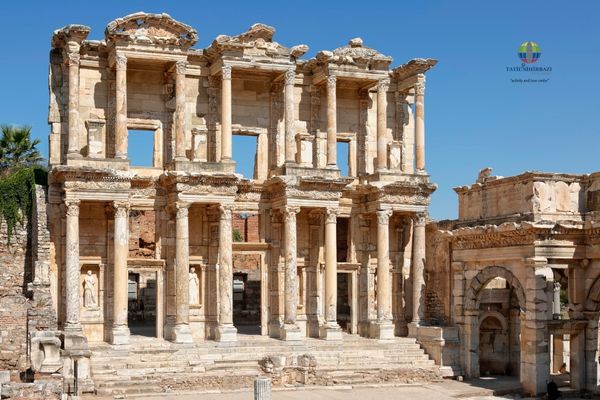
Ephesus was an important center for Early Christianity from the AD 50s. From AD 52–54, Paul lived in Ephesus, working with the congregation and apparently organizing missionary activity into the hinterlands.[26] He became embroiled in a dispute with artisans, whose livelihood depended on selling the statuettes of Artemis in the Temple of Artemis (Acts 19:23–41). He wrote between 53 and 57 AD the letter 1 Corinthians from Ephesus (possibly from the “Paul tower” close to the harbour, where he was imprisoned for a short time). Later Paul wrote the Epistle to Ephesians while he was in prison in Rome (around 62 AD).
Roman Asia was associated with John,[27] one of the chief apostles, and the Gospel of John might have been written in Ephesus, c 90–100.[28] Ephesus was one of the seven cities addressed in Revelation(Revelation 2:1–7), indicating that the church at Ephesus was strong.
Two decades later, the church at Ephesus was still important enough to be addressed by a letter written by Bishop Ignatius of Antioch to the Ephesians in the early 2nd century AD, that begins with, “Ignatius, who is also called Theophorus, to the Church which is at Ephesus, in Asia, deservedly most happy, being blessed in the greatness and fullness of God the Father, and predestinated before the beginning of time, that it should be always for an enduring and unchangeable glory” (Letter to the Ephesians). The church at Ephesus had given their support for Ignatius, who was taken to Rome for execution.
A legend, which was first mentioned by Epiphanius of Salamis in the 4th century AD, purported that Mary may have spent the last years of her life in Ephesus. The Ephesians derived the argument from John’s presence in the city, and Jesus’ instructions to John to take care of Mary after his death. Epiphanius, however, was keen to point out that, while the Bible says John was leaving for Asia, it specifically does not say that Mary went with him. He later stated that she was buried in Jerusalem.[29] Since the 19th century, The House of the Virgin Mary, about 7 km (4 mi) from Selçuk, is purported to have been the last home of Mary, mother of Jesus in the Roman Catholic tradition, based on the visions of Sister Anne Catherine Emmerich. It is a popular place of Catholic pilgrimage which has been visited by three recent popes.
The Church of Mary close to the harbor of Ephesus was the setting for the Third Ecumenical Council in 431, which resulted in the condemnation of Nestorius. A Second Council of Ephesus was held in 449, but its controversial acts were never approved by the Catholics. It came to be called the Robber Council of Ephesus or Robber Synod of Latrocinium by its opponents.